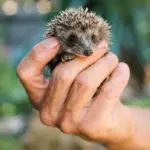Hedgehogs are sweet animals that may find to be very sweet, but they are a little more hardcore that they might seem. At a few weeks old you were only a baby, you wouldn’t be able to get a job, or find your own food.
Hedgehogs are very different from us, and they are a lot faster at growing up than we are. Only a few weeks after they are born, they leave their mothers and head out into the world on their own to fend for themselves.
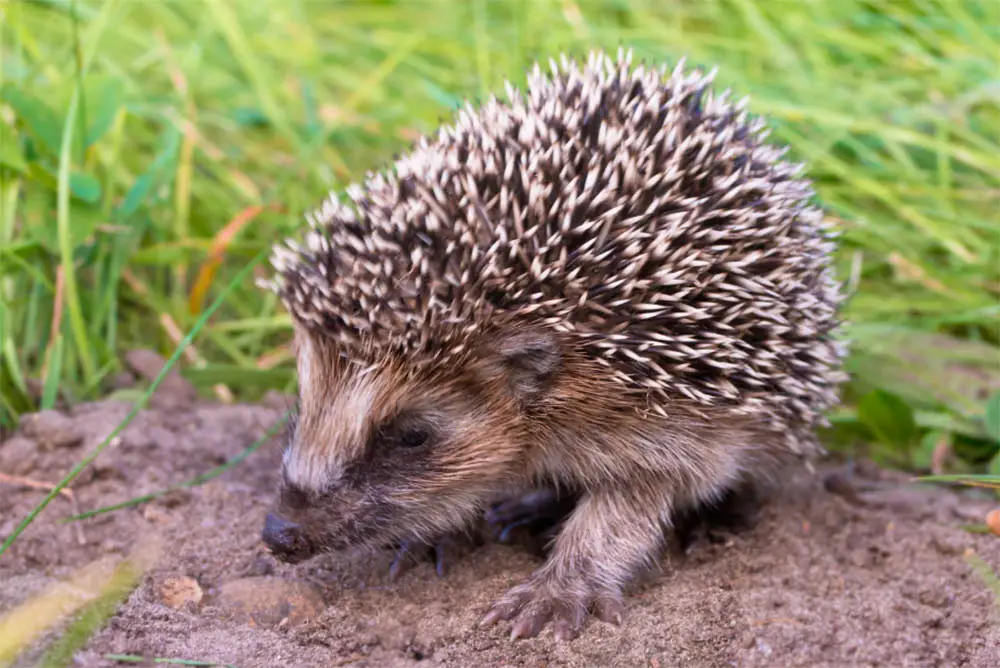
Today we will talk to you about the lifecycle of hedgehogs, including their reproduction, the lifecycle of the most common European hedgehog, how they grow up, and a year in the life of a hedgehog.
These prickly little mammals live very different lives from us, and they start off their lives as hoglets.
Hedgehog reproduction
Hedgehogs are solitary animals, and they only typically come together as a couple to mate.
Unlike us, they do not form unions, emotional attachments, and they certainly do not get married. They birth young hoglets which are often in litters that range from 1 hoglet, to 11 hoglets.
The hoglets will stay with their month for only four to seven weeks before they head out on their own into the big scary world.
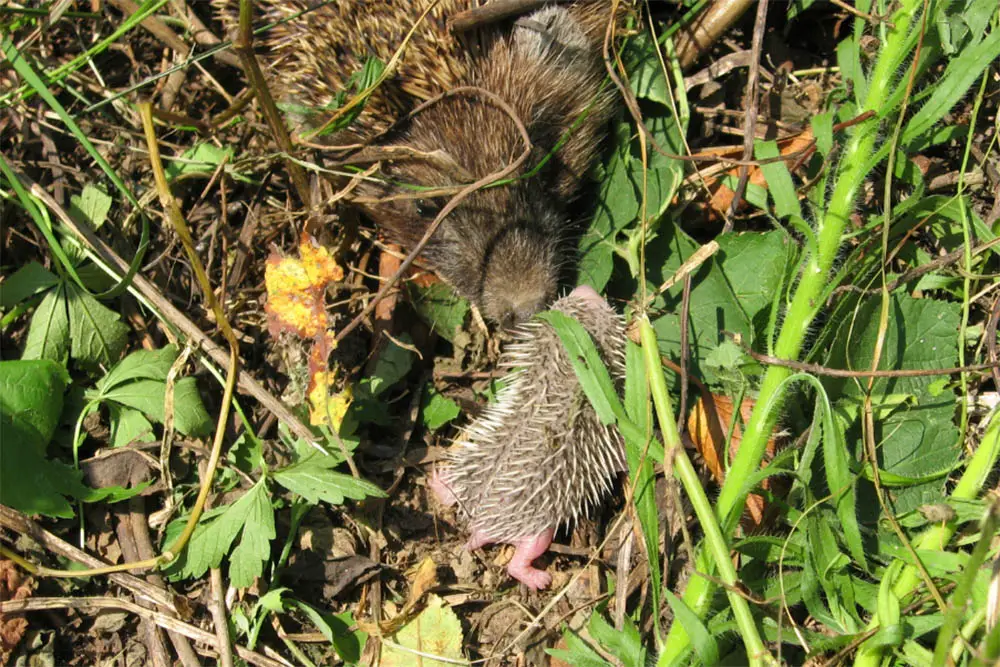
Before the hoglets leave their mother, their mother must guard them against predators, this can include other male hedgehogs, which will sometimes prey on the young of their species in order to liken the chance of survival of their own young.
It is also not uncommon for hedgehog mothers to eat their own young if the nest is disturbed, although, they will sometimes just move them on to a new nest, it depends on the situation of the specific hedgehogs.
The life cycle of European hedgehogs
Hedgehog life cycles will typically revolve around winter hibernation. These animals will breed from April until September. However, if young are born later on in the year the young are unlikely to survive hibernation.
Mother hedgehogs will give birth to litters that can be very large, however most litters average at four or five young, and the mother will then raise her babies alone.
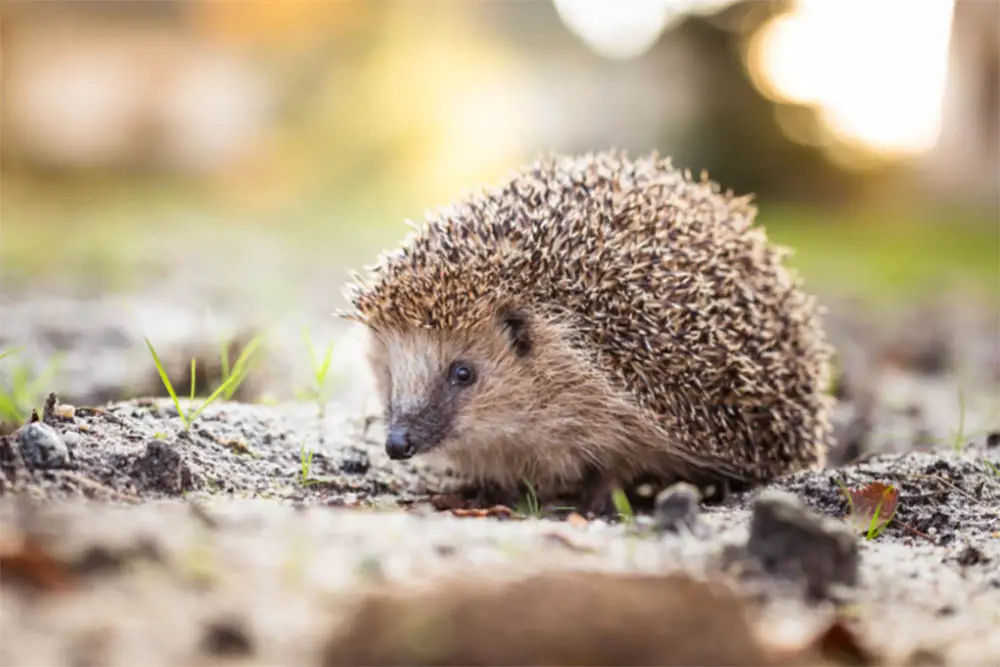
Typically, hedgehogs will hibernate from the beginning of winter until the middle of spring, however this depends on the weather and climate they live in. If you want to see a hedgehog and some hoglets, your best bet is to look for them in the spring and summer months.
Hedgehogs are nocturnal, they will travel between one and two kilometers (just above or just below one mile) per night. Hedgehogs will also only usually use a daytime nest for a few days before they move on, this does mean that hedgehogs need a large and accessible area of a suitable habitat.
This is sadly why in towns and cities in Europe, these hedgehogs are in decline, habitat fragmentation by roads, walls, and close-board fences mean that their habitat is disrupted.
Growing up
If you travel to countries that have wild hedgehogs, you may start seeing them in the early spring, depending on the weather and climate. They will have just woken up from their long winter hibernation, and they will be hungry and thirsty, so will venture out of their hibernation and find themselves something to drink and eat.
Hedgehogs will hunt for their food in order to build up their strength, and once they have eaten their fill and are feeling strong enough again, they will begin to search for nesting sites, and then build their nests.
In late spring, hedgehogs will begin to mate, in the Northern Hemisphere, this is around the time of May or June, for hedgehogs in the Southern Hemisphere this will likely be around October.
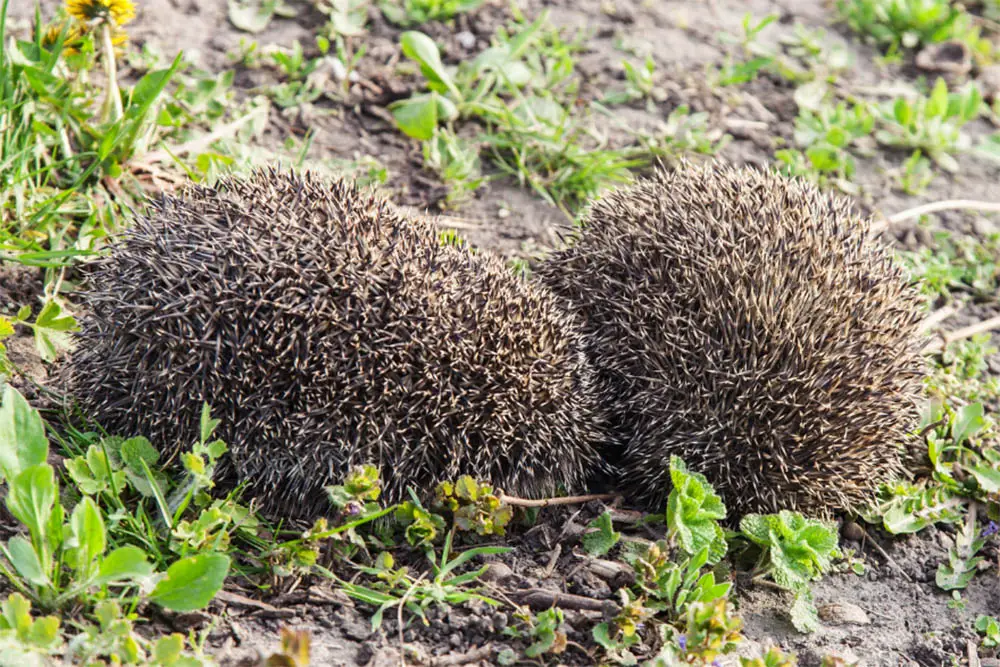
After they have mated, the males will then go off and leave the females to it. The females will get on with birthing and raising their young on their own.
Female hedgehog pregnancies typically only last 4 weeks to a month, and the mother will then give birth to an average of 5 baby hedgehogs, or hoglets. These tiny babies are born blind, pink and very, very small.
Even a week after they have entered the world they will still only be around 2 to 4 inches long. They will continue to live in the nest with their mother and feed on her milk.
A mother after they have been born, these hoglets will then start leaving to go hunting for food with mom. They will still be drinking her milk, but they are starting to adapt their diet to eating beetles, worms, slugs, fruits, mushrooms, and any discarded food that we, humans, leave scattered around if they should find it.
After a month of learning how to hunt with mom, they will now be grown up enough to hunt for their food themselves and make their own way in the world. They start to leave their mothers nest and find their own.
Then when the fall months come around they must start eating as much as they can. It is imperative that they build up their weight and body fat content so that they can survive the long winter ahead.
In some places, hedgehogs will hibernate all winter long, and in other places they will not need to hibernate for more than a few weeks, however, the story is the same, and they need to eat their fill to ensure that however long their hibernation lasts, they can get through it.
As winter begins, in November in the Northern Hemisphere, and in May/June in the Southern Hemisphere, hedgehogs will start curling up in their nests and begin the long sleep that is their hibernation.
In some places they will sleep right through the winter months and wake up in spring, for others they may just sleep through a few weeks when temperatures are at their very lowest. When they wake up, the cycle begins all over again.
A year in the life of a typical wild hedgehog.
January + February
(July +August in the Southern Hemisphere)
Over the winter, a majority of hedgehogs will hibernate. They might wake up a little during their hibernation depending on the climate or any disturbing factors, however they will typically remain inactive unless they are disturbed, or unless temperatures turn extremely mild.
March
(September in the Southern Hemisphere)
At this time of the year Hedgehogs will slowly start to emerge from their hibernation, they will typically have lost a third of their body weight during their hibernation.
So, now they need to quickly get that weight back on as soon as possible. If you live around hedgehogs, now is the time to be putting out food and water for them, as they will certainly need all the help they can get.
April
(October in the Southern Hemisphere)
A majority of hedgehogs will be active and busy eating as much as they can by this point. As they fill up their guts, they will also be on the lookout for any suitable sites to nest, so this is a good time to build up log piles and build hedgehog houses.
May
(November in the Southern Hemisphere)
It is now time for the mating season to begin. If you live near hedgehogs then you will hear snuffling and grunting at night, this might be mating hedgehogs.
Males circle their prospective female, sometimes for hours to persuade her to mate. After mating, he leaves, and she gets on with her pregnancy.
June
(December in the Southern Hemisphere)
Mom has done her job well, and now she will birth her litter of hoglets. She will forage and return to feel her young while they are still too small to leave the nest.
July
(January in the Southern Hemisphere)
After another month, the hoglets are now joining mom on hunts. They need to quickly learn what is good to eat, however they still return to their mom’s nest as they require her milk for one more month.
August
(February in the Southern Hemisphere)
The hoglets are now all grown up, and they are independent. They leave mom and start exploring the vast world outside the nest on their own. These animals live solitary lives, and they will usually never encounter their siblings again.
September
(March in the Southern Hemisphere)
Some of the more mature and experienced females may have mated for a second time, and now they are repeating the events of the last couple of months.
Sadly their natural diet will become scarce soon, late litters will struggle to gain the fat reserves they need and usually struggle, needing outside help.
October
(April in the Southern Hemisphere)
Adult hedgehogs are now gluttonous, eating as much as they possibly can to prepare for the cold winter ahead. They are also building their nests ready to hibernate.
November and December
(May and June in the Southern Hemisphere)
The hedgehogs have now begun their hibernation, and it is unlikely that you will see them again before the spring months come around again.








